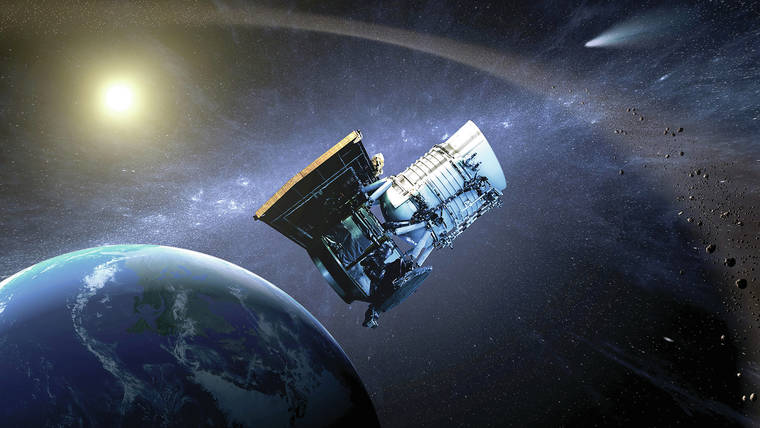Asteroids and comets are the leftovers of planet formation, and represent time capsules from the days when the Earth and Sun were newly formed. They also represent a potential threat to Earth, should a large object ever impact our world.
Dr. Joseph Masiero, a scientist at NASA Jet Propulsion Lab, will talk about the threat of near-Earth objects, and how NASA is working to track NEOs, utilizing a space telescope named NEOWISE with a mission to hunt for potentially dangerous asteroids. His presentation will also address what is currently known about asteroids and what is hoped to be discovered and learned from this mission as well as the next-generation of asteroid surveys.
This presentation will be held at 7 p.m. Friday at ‘Imiloa’s planetarium. The cost is $8 for members and $10 for non-members. To purchase tickets, please call 932-8901.
Sixty-five million years ago, an asteroid struck Earth off the coast of what is now Mexico and resulted in a global extinction event, most famously wiping out the dinosaurs and paving the way for the rise of mammals. As our understanding of this event has increased, it became apparent that this kind of event could happen again, and that we should be searching the skies for potential threats. A formal near-Earth object search program begun at NASA, and today is part of NASA’s Planetary Defense Coordination Office.
The majority of the asteroids in existing catalogs were discovered by ground-based telescopes using visible light. However, visible telescopes on the ground are subject to weather and can only observe when the Sun is down. Furthermore, stars are bright in optical wavelengths but asteroids are often faint.
In 2009, NASA launched a new space telescope called the Wide-field Infrared Survey Explorer, or WISE, to conduct an infrared survey of the sky. Over the course of its 7-month primary mission, WISE observed over 150,000 asteroids and discovered more than 33,000 new objects.
WISE showed the immense capability of the space-based thermal infrared survey, even though it was never designed for this purpose.
Because of this, NASA reactivated the WISE mission in 2013 under the new name NEOWISE, which continues its survey to today.
Masiero is a scientist at NASA’s Jet Propulsion Laboratory in Pasadena, California, specializing in the study of asteroids and comets.
He received his Ph.D. in Astronomy from the Institute for Astronomy, at the University of Hawaii, Manoa, in 2009, for his work on studying the rotation and polarization properties of Main Belt and Near-Earth asteroids.
‘Imiloa Astronomy Center is located at 600 ‘Imiloa Place in Hilo. For more information, visit www.imiloahawaii.org.






